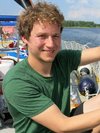Development of automatic methods for the detection and differentiation of illegal dumps and plastic waste in the environment using hyperspectral satellite imagery and Deep Learning (HyPla)
Funding by: BMWK
Funding ID: 50EE2301
Project executing or management agency: DLR Raumfahrtagentur
Funding period: 01.01.2023 – 31.12.2024
Waste crime is a serious problem in many countries of the European Union and worldwide, with negative consequences for the environment and health, as well as high costs for cleaning up and tracking down the perpetrators. It is estimated that waste crime costs EU Member States €72 billion a year in clean-up costs and lost revenue[1]. Accordingly, in its plan for "EU action to improve environmental compliance and governance", the European Commission has prioritised the fight against illegal waste shipments and explicitly proposes the use of space-based intelligence data, such as data from the Copernicus missions[2].
While remote sensing detection of waste sites has so far mostly relied on expensive, very high spatial resolution, multispectral satellite imagery or aircraft-based imagery data, and involved a lot of manual work, Sentinel-1 (S-1) and Sentinel-2 (S-2), PRISMA, EnMAP, and in the future also CHIME, (will) offer new possibilities for global detection of waste sites on a frequently recurring and free data basis, making it affordable for a broad community of new users such as environmental agencies and police forces (environmental crime law enforcement) worldwide, especially in developing countries. In addition to the availability of new satellite data, Deep Learning (especially Convolutional Neural Networks (CNNs)) has also established new methods in remote sensing that have improved achievable classification accuracies in many other application areas by 20-30% to often over 90% compared to classical classification methods and the first generation of Machine Learning methods (Russakovsky et al. 2015).
Our project goal is therefore to develop free software tools - based on free satellite data - for mapping illegal waste sites, including plastic waste accumulations, as part of the EnMAP-Box software for use in science, education, administration and business. In particular, the proposed project's first use of hyperspectral satellite data for material characterisation on suspected waste sites in combination with a preceding, CNN-based, area-wide search for suspected sites based on the spatially higher-resolution channels of the S-2 sensor (synergistic use), taking into account the spatial context, could represent a breakthrough towards full automation and the achievement of classification accuracies > 90% in this innovative application field.
The proposed project will open up a new innovative application field for the synergistic use of hyperspectral EnMAP, PRISMA, and CHIME data with higher spatial resolution multispectral data (e.g. Sentinel-2, PlanetScope). Remote sensing-based detection, monitoring and characterisation of illegal dumpsites, as well as monitoring of official landfills, has the potential to be developed as a service or automated downstream service.
The proposed project supports the following United Nations Sustainable Development Goals (SDGs):
- Reduce health risks from landfills (SDG 3: Health and well-being).
- Improve the use of resources (SDG 11: Sustainable Cities and Communities)
- Reduce waste dumping and inputs of pollutants into the environment (SDG 12: Ensure sustainable consumption and production patterns, SDG 15: Live on land)
[1]https://ec.europa.eu/commission/presscorner/detail/en/IP_12_18, letzter Zugriff: 31.08.2021
[2] s. Maßnahme 8 in Tabelle 2 in „COM/2018/010 final“: https://eur-lex.europa.eu/legal-content/DE/TXT/?uri=COM:2018:0010:FIN, letzter Zugriff: 31.08.2021


